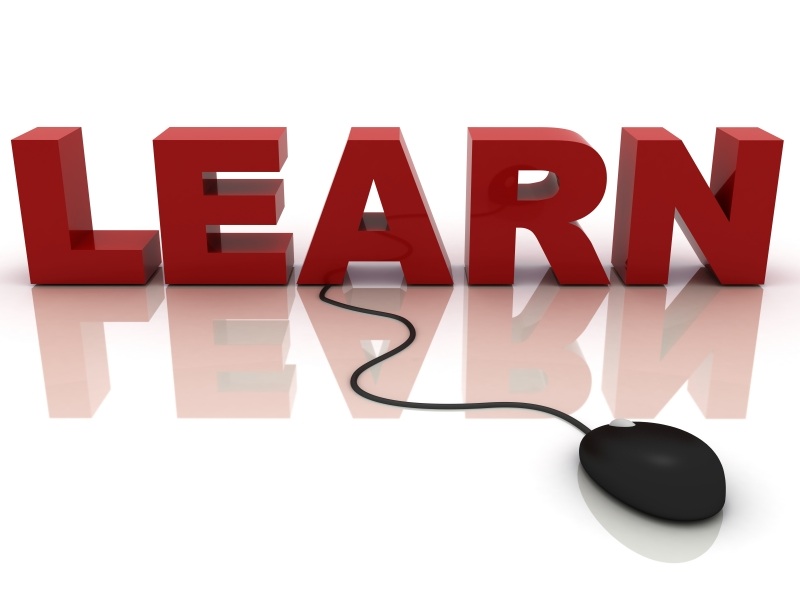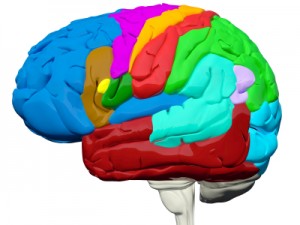Become familiar with Adult Learning Theory and the six principles of adult learning
Adult Learning Theory
Part of being an effective educator involves understanding how adults learn best (Lieb,1991). Andragogy (adult learning) is a theory that holds a set of assumptions about how adults learn. Andragogy emphasises the value of the process of learning. It uses approaches to learning that are problem-based and collaborative rather than didactic, and also emphasises more equality between the teacher and learner.
Andragogy as a study of adult learning originated in Europe in 1950’s and was then pioneered as a theory and model of adult learning from the 1970’s by Malcolm Knowles an American practitioner and theorist of adult education, who defined andragogy as “the art and science of helping adults learn” (Zmeyov 1998; Fidishun 2000).
What do you mean by ‘adult learning principles’?
Knowles identified the six principles of adult learning outlined below.
- Adults are internally motivated and self-directed
- Adults bring life experiences and knowledge to learning experiences
- Adults are goal oriented
- Adults are relevancy oriented
- Adults are practical
- Adult learners like to be respected
How can I use adult learning principles to facilitate student learning on placement
Good question!! Here we will discuss some ways to facilitate learning by applying Knowles’ Adult Learning Principles:
1. Adults are internally motivated and self-directed
Adult learners resist learning when they feel others are imposing information, ideas or actions on them (Fidishun, 2000).
Your role is to facilitate a students’ movement toward more self-directed and responsible learning as well as to foster the student’s internal motivation to learn.
As clinical educator you can :
Set up a graded learning program that moves from more to less structure, from less to more responsibility and from more to less direct supervision, at an appropriate pace that is challenging yet not overloading for the student.
Develop rapport with the student to optimise your approachability and encourage asking of questions and exploration of concepts.
Show interest in the student’s thoughts and opinions. Actively and carefully listen to any questions asked.
Lead the student toward inquiry before supplying them with too many facts.
Provide regular constructive and specific feedback (both positive and negative),
Review goals and acknowledge goal completion
Encourage use of resources such as library, journals, internet and other department resources.
Set projects or tasks for the student that reflect their interests and which they must complete and “tick off” over the course of the placement. For example: to provide an in-service on topic of choice; to present a case-study based on one of their clients; to design a client educational handout; or to lead a client group activity session.
Acknowledge the preferred learning style of the student. A questionnaire is provided below that will assist your student to identify their preferred learning style and to discuss this with you.
2. Adults bring life experiences and knowledge to learning experiences
Adults like to be given opportunity to use their existing foundation of knowledge and experience gained from life experience, and apply it to their new learning experiences. As a clinical educator you can:
Find out about your student – their interests and past experiences (personal, work and study related)
Assist them to draw on those experiences when problem-solving, reflecting and applying clinical reasoning processes.
Facilitate reflective learning opportunities which Fidishun (2000) suggests can also assist the student to examine existing biases or habits based on life experiences and “move them toward a new understanding of information presented” (p4).
3. Adults are goal oriented
Adult students become ready to learn when “they experience a need to learn it in order to cope more satisfyingly with real-life tasks or problems” (Knowles,1980 p 44, as cited in Fidishun, 2000). Your role is to facilitate a student’s readiness for problem-based learning and increase the student’s awareness of the need for the knowledge or skill presented. As educator, you can:
Provide meaningful learning experiences that are clearly linked to personal, client and fieldwork goals as well as assessment and future life goals.
Provide real case-studies (through client contact and reporting) as a basis from which to learn about the theory, OT methods, functional issues implications of relevance.
Ask questions that motivate reflection, inquiry and further research.
4. Adults are relevancy oriented
Adult learners want to know the relevance of what they are learning to what they want to achieve. One way to help students to see the value of their observations and practical experiences throughout their placement, is to:
Ask the student to do some reflection on for example, what they expect to learn prior to the experience, on what they learnt after the experience, and how they might apply what they learnt in the future, or how it will help them to meet their learning goals.
Provide some choice of fieldwork project by providing two or more options, so that learning is more likely to reflect the student’s interests.
“Students really benefit from regular ‘teaching sessions’ – time spent going through assessments such as how to do a kitchen assessment, and having in-services presented on specific topics – such as Cognition or Perception” ” I find they understand more about a topic when it is directly relevant to the work context. This is invaluable as it ties theory to practice.” S. Bartholomai, OT clinical educator, Ipswich Hospital (personal communication, May 31, 2007)
5. Adults are practical
Through practical fieldwork experiences, interacting with real clients and their real life situations, students move from classroom and textbook mode to hands-on problem solving where they can recognise first hand how what they are learning applies to life and the work context. As a clinical educator you can:
Clearly explain your clinical reasoning when making choices about assessments, interventions and when prioritising client’s clinical needs.
Be explicit about how what the student is learning is useful and applicable to the job and client group you are working with.
Promote active participation by allowing students to try things rather than observe. Provide plenty of practice opportunity in assessment, interviewing, and intervention processes with ample repetition in order to promote development of skill, confidence and competence.
“I like to encourage students to select and use a clinical model, such as Chapparo and Rankin’s OPM, to apply to practice. It helps students to identify what performance components (e.g. endurance, tone, organisational skills) they want to assess for example, in a dressing task. This helps to reinforce why OTs do things, and how the link to occupation differs from other disciplines.” (S. Bartholomai, personal communication, May 31, 2007)
6. Adult learners like to be respected
Respect can be demonstrated to your student by:
Taking interest
Acknowledging the wealth of experiences that the student brings to the placement;
Regarding them as a colleague who is equal in life experience
Encouraging expression of ideas, reasoning and feedback at every opportunity.
It is important to keep in mind that the student is still developing occupational therapy clinical practice skills. However, with the theory and principles of adult learning in mind, you can facilitate the learning approach of the student to move from novice to more sophisticated learning methods. This facilitates greater integration of knowledge, information and experience; the student learns to distinguish what is important when assessing and working with clients; how to prioritise client needs, goals and caseload; when rules can be put aside and how/when the approach to occupational therapy practice and professional communication emerges from strict modelling of behaviour into a unique therapeutic and professional expression of self.
(Fidishun, 2000; Lieb,1991)
Want to know more?
Please take a moment to read the Reference Document 3.1: Basic Principles of Adult Learning which the QOTFC (2005) have applied to the role of clinical educator with students in clinical settings.
If you would like to know more about Adult Learning, you can access a very useful and thought-provoking resource called the Self-paced Adult Learning Module for Allied Health Professonals – CDrom (Allen, 2005) from the clinical education administrator, The University of Queensland ph: 07 3365 2792.
Learning Styles
Acknowledge the preferred learning style of your student
We have explored the general principles that apply to how adults learn. Bearing these principles in mind, we can also appreciate that as individuals, we all have different preferences on how we approach new learning. For instance, some people are active learners. They like to be constantly challenged, can think on their feet and enjoy the challenge of being thrown in the deep end, learning best ‘on the job’ through practical exposure, trial and error and direct experience. Other people are more reflective learners, they need time to plan, prepare, research and to have time to reflect on their learning before being confronted with a new challenge. They may like to be thoroughly briefed before proceeding. Some people are theoretical learners, and are stimulated by abstract ideas and concepts. They like to consider numerous viewpoints and theories and to analyse situations before selecting options and approaches to a task. They learn through observation, discussion, analysis, and enjoy logical and sophisticated reasoning. Whilst others are pragmatic learners, they enjoy learning from qualified demonstration, and need to see the practical advantage of all that they are doing. They need to know that what they are doing works and is realistic (Sample, 1999).
Learning styles can be influenced by past experiences, education, work and the learning situation. It is important to recognise that they are not fixed but may be adapted according to context and what is being learned. Nevertheless most people still favour one style of learning.
Here are some useful resources and references
The Manual of Learning Styles, by Peter Honey and Alan Mumford (1992).
Provides an introduction to learning styles with advice on how to administer and interpret the The Learning Styles Questionnaire.
Kolb Learning Style Inventory (LSI): Self-scoring and interpretation booklet. A statistically reliable and valid, 12-item questionnaire and workbook, developed by David A. Kolb (1976).
VARK (Visual, Aural, Read/write, Kinaesthetic). A guide to learning styles by Nick Fleming (1992) Website. http://www.vark-learn.com/english/index.asp
Index of Learning Styles.http://www.engr.ncsu.edu/learningstyles/ilsweb.html
Myers-Briggs Type Indicator (MBTI) by (1993). These resources provide useful exercises in helping you and the student to identify preferred learning styles, as well as your preferred approach to teaching. You can then discuss and negotiate with the student learning strategies that will compliment their learning style and your teaching style, as well as the expectations of the placement and the setting.
“One of my past students was very ‘hands-on’ ie the activist, and so thoroughly enjoyed being thrown in the deep end and was prepared to make a few mistakes [in order] to learn. I perceived early on that she learnt best through ‘doing’ and not so much from observing or reading“. N. Flynn, OT clinical educator, Mater Private Hospital 2007 (personal communication, June,6,2007).
“Then you have the ‘information gatherer’ student, who gathers piles and piles of information, but has difficulty applying this information to practice. It is about enabling that student to turn the ‘pile’ into a program and to use the information to tune their clinical reasoning” K.Adam, OT clinical educator, workplace rehabilitation practice (personal communication, May,10, 2007).
“Conflict can occur when the supervisor has an ‘activist’ style to teaching, whilst the student has a ‘theorist’ style to learning” OT clinical educator, PA Hospital (personal communication, May,25, 2007)
Flexibility and adaptability is the key to learning. There may be times when you need to adjust your teaching style to accommodate student needs, as in turn the student will need to accommodate your teaching style and the expectations of the context and situation in which they are learning.
“It is important to recognise that you can’t always cater to the learning styles of each student, but you can try to accommodate them as much as is reasonable. For instance, if a student likes demonstration and practice prior to implementing an interview or assessment then, rather than you providing that demonstration all the time, you could encourage them to practice sometimes with the other students first. You can try to meet them in the middle ground” S.Bartholomai, OT clinical educator, Ipswich hospital (personal communication, May 31, 2007)
Difference of Approach
Here is a possible example of two different student learning approaches to delivering a staff in-service and suggestions on how teaching approaches could be modified to accommodate differences in learning style:
Active Learner : May write brief notes to self as prompts and then elaborate more spontaneously through active thinking on spot during in-service. May use immediate verbal and non-verbal feedback to adapt and modify performance behaviour during course of in-service – learning on the spot. May reflect on learning and performance through direct discussion immediately following in-service (with or without note-taking).
Possible teaching approach : Ask student to talk through their plan and rationale prior to action. Direct student to relevant and important resources, information or protocols to ensure attention is given to essential level of preparation. Allow plenty of active hands-on learning and regularly ask student to explain reasoning, background knowledge as it is happening. Encourage immediate reflection and feedback.
Reflective Learner : May make efforts to feel thoroughly prepared, in order to boost confidence and to accept goal as achievable. May prepare for in-service by collecting and reading large amounts of relevant (or sometimes broadly relevant) information relating to topic to gain a comprehensive understanding of the theme; and will prepare for delivery of in-service through memorising, rehearsing information delivery and preparing extensive or detailed notes (may be word for word) for reference during in-service delivery (may or may not be used “in-action”). May have prepared plan B for aspects of in-service discussions, and considered responses to possible questions. Will appreciate time to reflect on performance and outcomes afterwards, and may prefer to take some notes prior to discussing with supervisor.Possible teaching approach : Allow student time to plan, consult and research information relevant to task – within reason. Monitor student’s interpretation of information gathered to ensure that relevance and prioritisation of important information is effectively distinguished from less relevant – assists student to avoid overwhelming themselves with too much information. Encourage time for quiet reflection prior to providing feedback or joint reflection session.
(Sample, 1999)
Key points
Adults have preferred learning styles
- Know your own style
- Be aware of other learning styles
- Acknowledge the preferred learning style of your student
This will assist to
- Identify areas in need of improvement
- Design strategies for enhanced learning
(Fitzgerald, 2007, March)























